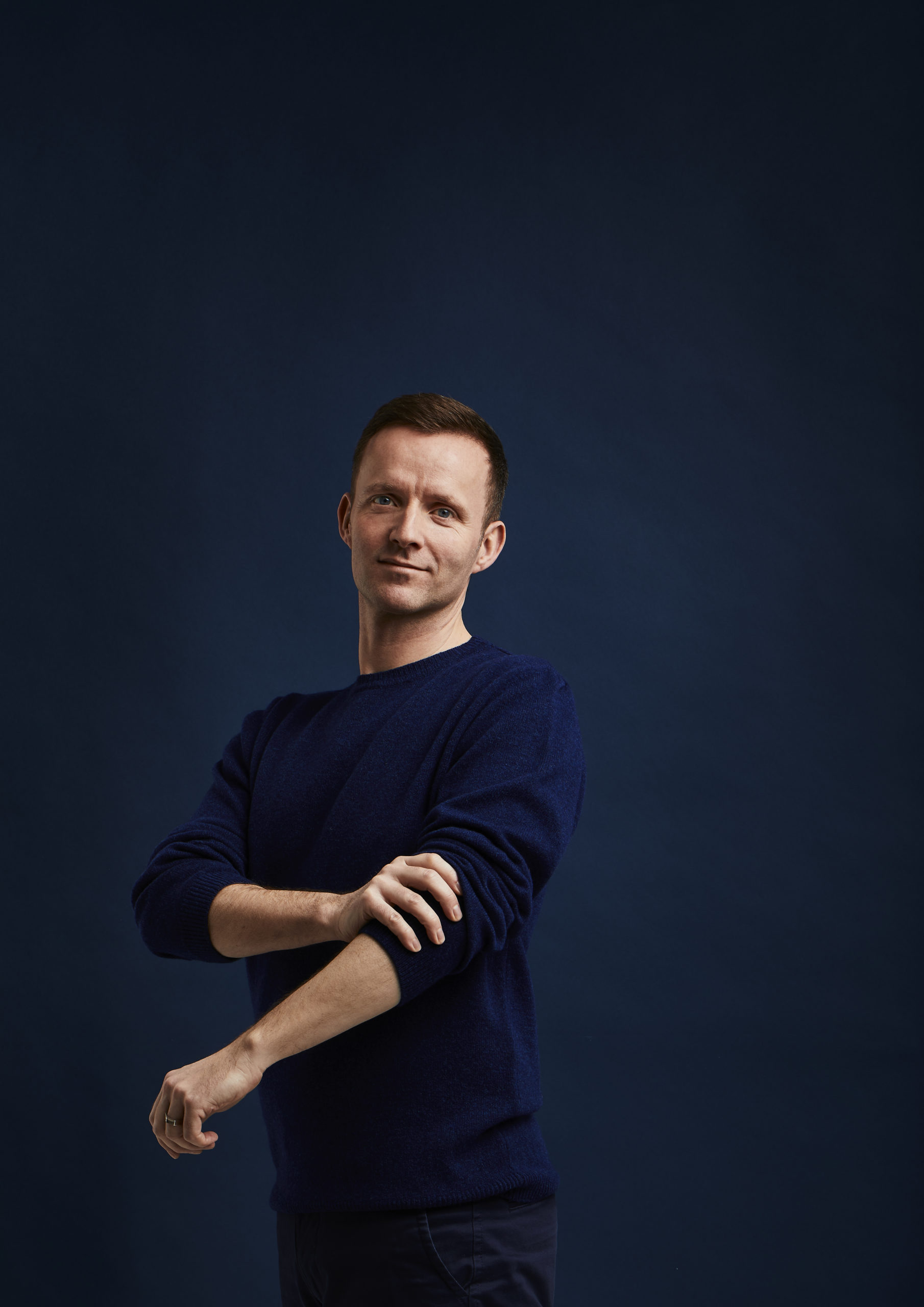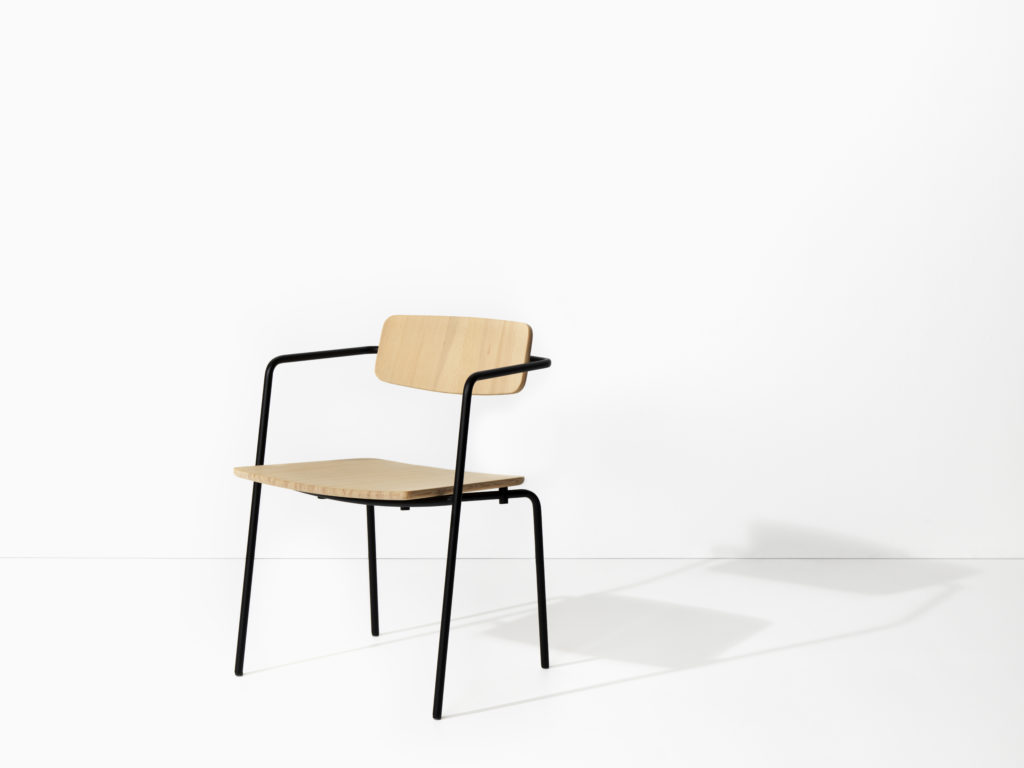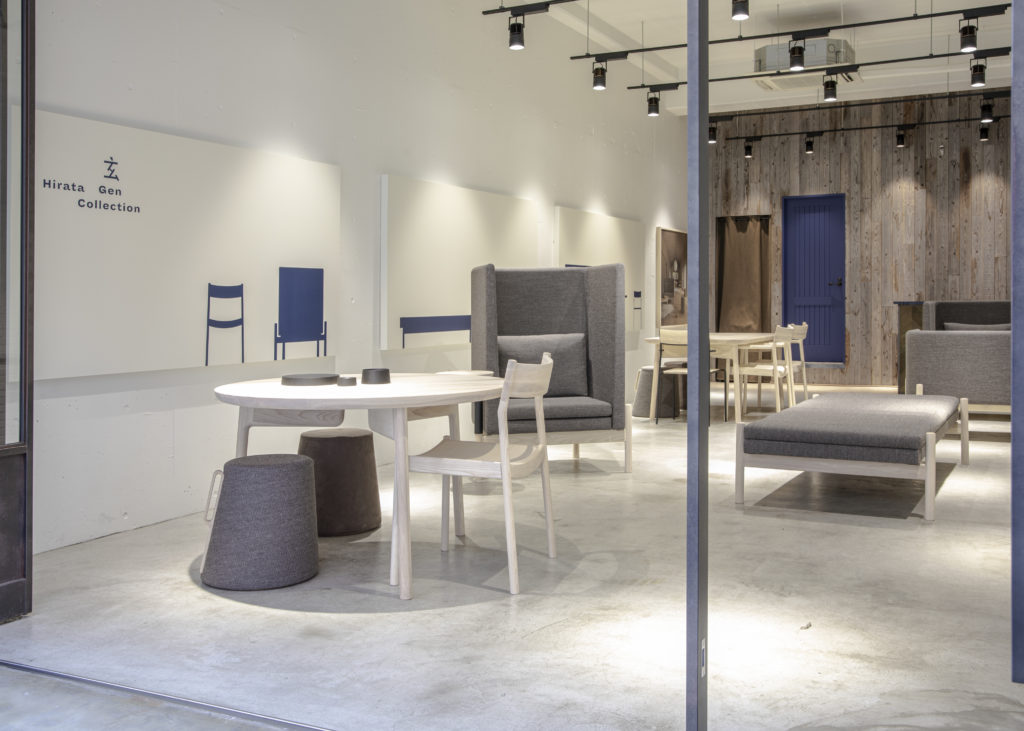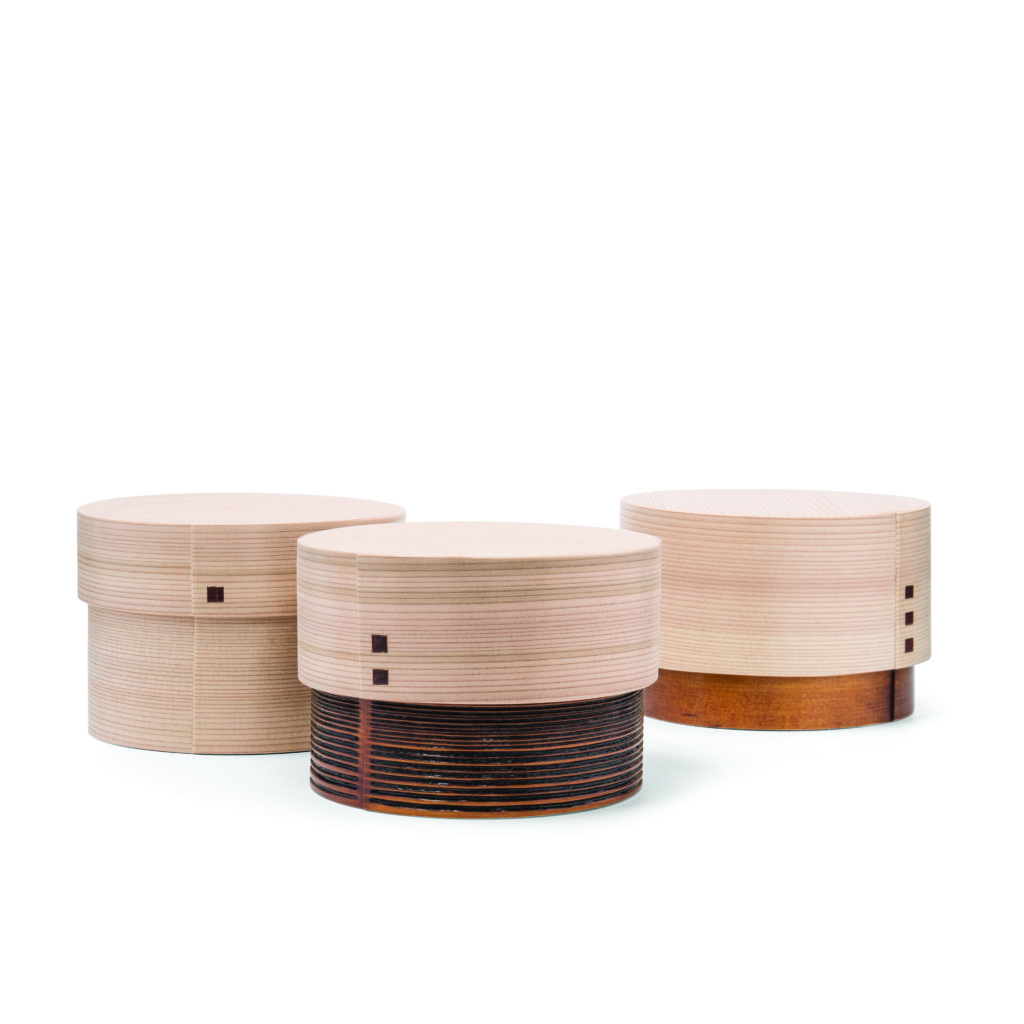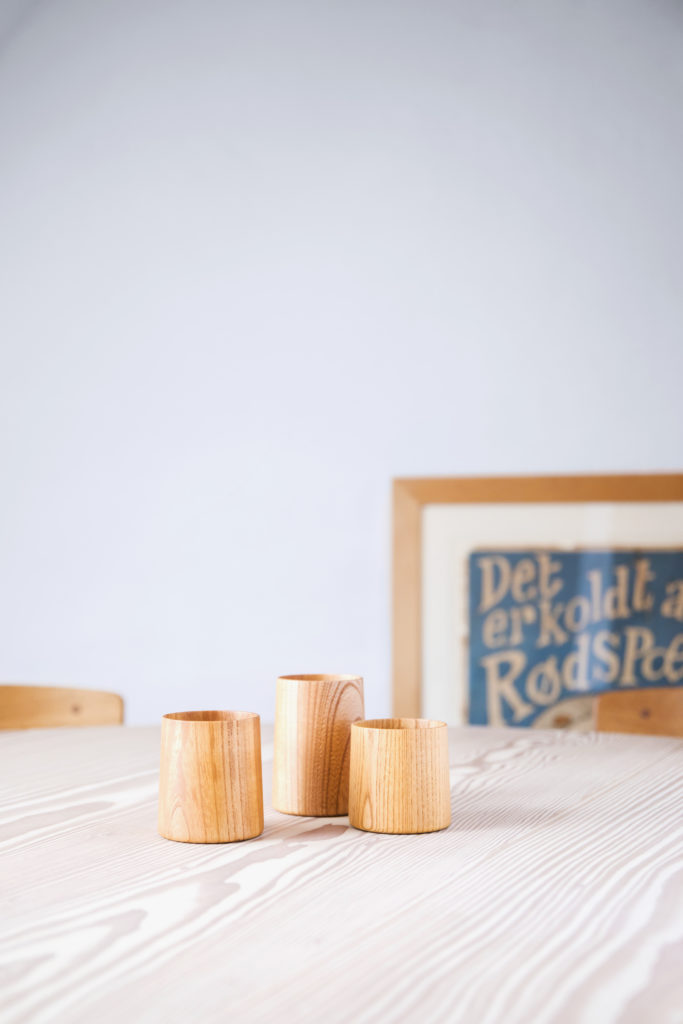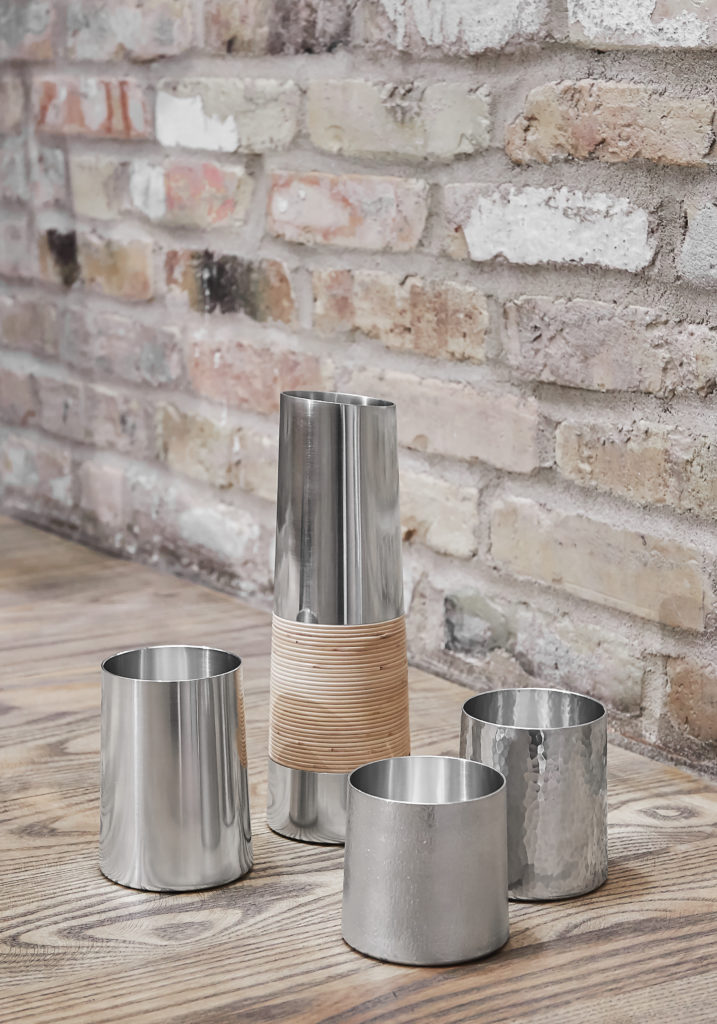デンマークのデザイナー/建築家ラース・ヴァイエンは日本でキャリアを積んできた。彼の分野でのデンマークと日本の類似点と相違点に関する彼の見解を得る。
インタビュー : Anne Sophie Thingsted
Lars Vejenは、多くの製品に日本とデンマークのデザイン要素を組み合わせ、デンマークと京都の両方で独自のデザインスタジオを運営し、年2~3回日本を訪れています。 2016年に、彼はプロジェクトDesign Collaborationsを開始しました。 2017年には、両国間の1世紀半の外交関係を祝うDesign Collaboration/Japan-Denmark 150 yearsを成功させました。
そして2019年11月、彼のデンマークと日本の共同デザインオフィスstudioA27としてのプロジェクトが始動し、2020年2月に東京でPre launchを開催しました。
在日デンマーク大使館は、彼と会い、彼の最新プロジェクト、デンマークと日本のデザインの特徴、デンマークのデザイナーとして日本で事業を拡大する方法についてインタビューしました。
“ワオ!それは私が想像していたよりもはるかに大きな仕事ですね!”
質問:「そのプロジェクトについて明らかにできる範囲でお話いただけますか?」
Lars Vejen:「私が現在取り組んでいるプロジェクトは、私の友人である日本人デザイナーの石河泰治朗と私とのコラボレーションプロジェクトです。「studioA27」という名前でクリエイティブなコラボレーションを行っています。これは主に全く新しい家具コレクションであり、このプロジェクトは既存の日本の家具メーカーと取り組んでいます。全く新しいブランドを立ち上げるので、彼らの既存のコレクションの一部ではなく、Hirata Gen Collectionという独自のブランド名を持ちます。
これは非常に野心的なプロジェクトです。クライアントと初めて会って打ち合わせをするときは、常に1つまたは2つの作品またはおそらく小さなコレクションをデザインすることを提案されることを期待しています。しかし、今回メーカー側は、私たちが完全なコレクションをデザインし、新しいブランドを立ち上げることを突然依頼してくれました。予想外に大きな仕事で驚きましたね。」
質問:「どのようなコレクションですか?」
Lars Vejen:「私は日本のメーカーとデザイナーの伝統を、デンマークのデザイナーとしての自分のバックグラウンドと融合させようとしています。希望としては、このコレクションが日本で製造されたデンマークと日本のデザインコレクションとして認知されることを願っています。
材料の見方や表面処理など、デンマークのデザインから最高の要素をすべて取り出し、それらを製品に実装しようとしました。例として、日本市場はラッカーでの仕上げで満足しています。日本人は自宅で天然木を維持する知識やスキル、伝統を持っていないため、木の表面は通常非常に多くの仕上げで保護されています。
しかしデンマークでは、反対です。私たちは、通常の日常のメンテナンスの一環として天然石鹸で処理する自然な木製の表面にはるかに慣れており、木製の表面が古くなって暗くなることを好みます。だから、私はラッカー仕上げではなく、その下にある天然木を活かす方法に取り組みたいと思いました。それは、木工製品についてより素直に向き合って出た答えの一つです。」
「日本人とデンマーク人は自然素材に対する深い愛情を共有していると思います。」
質問:「日本のデザインや工芸はどの要素がデンマークと違うと思いますか?」
Lars Vejen:「日本のデザインアプローチを見ると、もう少し概念的で芸術的だと思います。デンマークで私たちが探求し、使用し、見て、愛するデザインは、形と機能に非常に重点を置いています。例えば椅子を例に挙げるとしたら、デンマーク人にとって椅子は、座るために十分に強く、美しく、快適でなければなりません。」
日本では、製品がコンセプトになるという点で、アプローチはより芸術的と思われます。ご存知のように、それらは椅子に座っていることの概念を形成し、その概念を実際の椅子に変換します。必ずしも快適な椅子というわけではありませんが、芸術的なアイデアをより訴える、本質的でない他の特性を備えた椅子です。」
質問:つまり、一般的に言えば、デンマークのデザインはもう少し機能的であり、日本のデザインは芸術に少し傾いています。日本とデンマークのデザインに共通していると思う特徴はありますか?」
Lars Vejen:「それは質問の1つです。私たちはいつもそれは考えていることの一つです。ここで今応えるとしたら、日本人とデンマーク人は自然素材に対する深い愛を共有していると思います。たとえば、木材は、家具に使用されているか、家の表面材として使用されているかにかかわらず、私たち二人が高く評価する材料の良い例です。」
「ビジネスをしたいだけでは不十分です」
質問:「日本企業といくつかのコラボレーションを行った後、デンマークのデザイナーや建築家が日本でプロジェクトを行う機会をどのように考えていますか?」
Lars Vejen:「ここにいることに本当の意味で関心を持ち、十分に献身している人なら誰でも良い機会があると思います。一度だけ来て、契約書にサインできると思うのは間違いです。日本人と良い実りある対話をする必要があります。本当に望むなら可能性があります。ただビジネスをしたいだけでは十分ではありませんが、日本に誠実な関心を持っていることはあなたにとって有利に働くでしょう。
日本人は非常に敏感な人で、人や状況をよく見ていると思います。私はデンマーク人や他の人がそうではないと言っているわけではありませんが、日本人は誰かが本当にプロジェクトをやりたいかどうかを感知する特別なスキルを持っています。同時に、日本でのプロジェクトに割り当てられるということは、あなたとあなたのクライアントとの個人的な共感があるということもできます。その共感がない場合、今後ビジネスを展開していく上でより困難なことになり、パートナーシップはうまく築けないかもしれません。もちろん、日本人は感情や人間関係だけを気にしているわけではありません。彼らは良いビジネスをすることも好きなので、良い関係性と正しい献身性があれば、日本でビジネスをすることができると思います。」
質問:「日本で事業を拡大したいデンマークのデザイナーおよび建築家に与えることができるアドバイスがあるとしたら何ですか?」
Lars Vejen:初めて日本に訪れたときは、閉ざされたドアばかりかもしれません。まずはここで様々見て学ぶ必要があるでしょうね。突然会社のトップに電話してミーティングを開いてもらうことはできません。デンマークでは、基本的にメーカーのトップに電話してミーティングを設定できます。その後、握手と契約で事を進めることができますが、日本ではそんなこと見たことがないです。
これまでに、一緒に仕事をする可能性を探求したいと思える非常にオープンで前向きな日本人にたくさん会いました。今はたくさんの良いコラボレーションがありますが、それは私が長年ここにいるという事実に基づいていると思います。今日一緒に仕事をしている人の中には、仕事以外で会う友達になった人もいます。日本の将来クライアントとなり得る方々は、私がビジネスのためだけにここにいるわけではなく、私がここにいるのが本当に好きであることを今後目の当たりにすることになるでしょう。それは彼らにとっても本当に魅力的に映り、よかったと感じてもらえることだと思います。
質問:デンマークのブランドは世界中でよく知られています。日本人はデンマークのデザインに対してどのように感じていると思いますか?
Lars Vejen:デザイン建築分野の日本人は間違いなく「デンマークのデザイン」という言葉を聞いたことがあると思います。デンマークのデザイン、家具、製品は長い間日本市場に存在しており、多くの場合、デンマークの故郷よりも日本で高い価格で販売されている非常に高級な製品です。しかし、すべてのデンマーク人がデンマークのデザインについて知っているわけではないように、日本人もそうではありません。デザインや工芸の中で働く人々は、通常デンマークのデザインに関する基本的な知識を持っていますが、もし知識がなくても、高い品質であることを知っているだけでデンマークのデザインに対する価値や敬意を感じてもらえているのだと思います。
www.larsvejen.dk / www.studioA27.com .
Lars Vejen: How to make it in Japan as a Danish designer
Danish furniture architect Lars Vejen has made a career in Japan. Get his perspective on the similarities and differences between Denmark and Japan within his field.
By Anne Sophie Thingsted
Lars Vejen combines
Japanese and Danish design elements in the majority of his products, runs his
own design studio in both Denmark and Kyoto, and visits Japan 2-3 times a year.
In 2016, he started the project Design Collaborations. In 2017, it was expanded
with several new Japanese collaborators including Design
Collaboration/Japan-Denmark 150 years in celebration of one and a half
centuries of diplomatic relationships between the two countries.
In November 2019, the Danish furniture architect came to Japan to work on his latest Danish-Japanese project, which will be pre-launched in Tokyo in February 2020.
The Embassy of Denmark in Japan met with him to talk about his newest project, the characteristics of Danish and Japanese design and about how to expand in Japan as a Danish designer.
“Wow! That was a much bigger task than I expected!”
Question: “How much can you reveal about the project?”
Lars Vejen: “The project, that I am working on right now, is one where I have invited my good friend – Japanese designer Taijiro Ishiko to collaborate with me – we have founded a creative collaboration under the name “studioA27”. It’s a complete and new furniture collection, mainly made of wood, and the project is made for an existing Japanese furniture manufacturer. They are going to create a whole new brand, so it won’t be a part of the existing collection but have its own company name; Hirata Gen Collection.
In that way, it’s a rather ambitious project. I was invited to meet the client for the first time, and having had many open meetings with clients before, I always expect to be offered to design one or two pieces or perhaps a smaller collection. But at this meeting I suddenly realized that he wanted us to design a full collection and create a new brand, so I thought: ‘Wow! That was a much bigger task than I expected!’”
Question: “What sort of collection is it?”
Lars Vejen: “I am trying to merge the traditions from the Japanese manufacturer and designer with my own background as a Danish designer. Hopefully, the collection will be read and understood as a Danish-Japanese design collection manufactured in Japan.
I took all the best elements from Danish design, such as our way of looking at materials and surface treatment and tried to implement them into the products. As an example, the Japanese market is very happy about lacquer. Japanese people not in the field don’t usually have the skills or tradition to maintain natural wood at home, so the surface of the wood is usually quite heavily lacquered.
In Denmark, it is the opposite. We are much more used to a natural wooden surface, which we treat with natural soap as part of normal everyday maintenance and we like the way a wooden surface ages and becomes darker. So, I’m trying to get rid of the lacquer stuff and get down to the natural wood underneath, which I see as a way of being more honest about the product.”
“I think Japanese and Danes share a deepfelt love of natural materials”
Question: “Which elements of Japanese design or craft do you find different from the Danish approach?”
Lars Vejen: “Looking at the Japanese design approach, I think it is a bit more conceptual and artistic. The design we are brought up exploring, using, seeing and loving in Denmark is very much about form and function. Danes say: ‘We need to make a chair, it needs to be strong, beautiful and comfortable to sit on.’
In Japan, the approach seems to be more artistic in that the product becomes a concept. You know, they form a concept of what sitting in a chair should be like, and then transform that concept into the actual chair. Not necessarily a super comfortable chair, but one that has other qualities that appeal more to an artistic idea.”
Question: “So generally speaking, Danish design is a bit more functional and Japanese design is leaning a bit more towards the artistic. Are there any traits that you think Japanese and Danish design have in common?”
Lars Vejen: “That is one of the questions, we have been asking ourselves. I think Japanese and Danes share a deepfelt love of natural materials. Wood, for example, is a good example of a material that we both appreciate, whether it’s used in furniture or as a surfacing material in our homes.”
“Just wanting to do business is not enough”
Question: “Having done several collaborations with Japanese companies, how do you view the opportunities for Danish designers and architects to do projects in Japan?”
Lars Vejen: “I think anyone who has a true interest in being here and is dedicated enough has good opportunities. Just coming once, thinking you can sign a contract, is a mistake. You need to get into a good and fruitful dialogue with the Japanese, and the possibility is there if you really want it. Just wanting to do business is not enough but carrying a sincere interest in Japan will work in your favor.
I think the Japanese are quite sensitive people, who read people and situations well. I’m not saying that Danes and other people don’t, but the Japanese just have a particular skill of sensing whether someone genuinely wants to do the project or not. At the same time, getting assigned to projects in Japan is also about the personal match between you and your client. If you don’t have that match, it’s more difficult and the partnership might not happen. Of course, the Japanese don’t only care about feelings and personal relations. They also like doing good business, so if there’s a good match and the right dedication, you can do business in Japan.”
Question: “What is the best advice you can give to a Danish designer and architect who would like to expand in Japan?”
Lars Vejen: First you need to travel here to explore if you even like it here, because it can be a closed door, when you arrive for the first time. You can’t just call the head of a company and have a meeting; it doesn’t work that way. In Denmark, you can basically call the owner of a factory and have a meeting set up. Afterwards, you can leave the meeting with a handshake and a contract, but I have never seen that in Japan.
I have met a lot of very open and positive Japanese who would like to explore the possibilities of working together, and I have a lot of good collaborations now, but I think it is based on the fact that I have been here for so many years. Some of the people I work with today have become friends that I see outside of work. I think that makes other Japanese potential clients witness that I really love being here and that I’m not just here for business. I think that really appeals to them.
Question: The Danish brand is quite well-known worldwide. What is the perception of Danish design among the Japanese?
Lars Vejen: I definitely think the Japanese in my field have heard the term ‘Danish design’, no doubt. Danish design, furniture and products have been in the Japanese market for a long time and it is often a very exclusive product usually being sold at a higher price in Japan than back home in Denmark. But just like not all Danes know about Danish design, neither does all Japanese. The people I work with within design and crafts usually possess some basic knowledge about Danish design. And if not knowledge, then at least some appreciation and respect for what Danish design stands for, because they know it’s something of a rather high quality.
www.larsvejen.dk / www.studioA27.com
